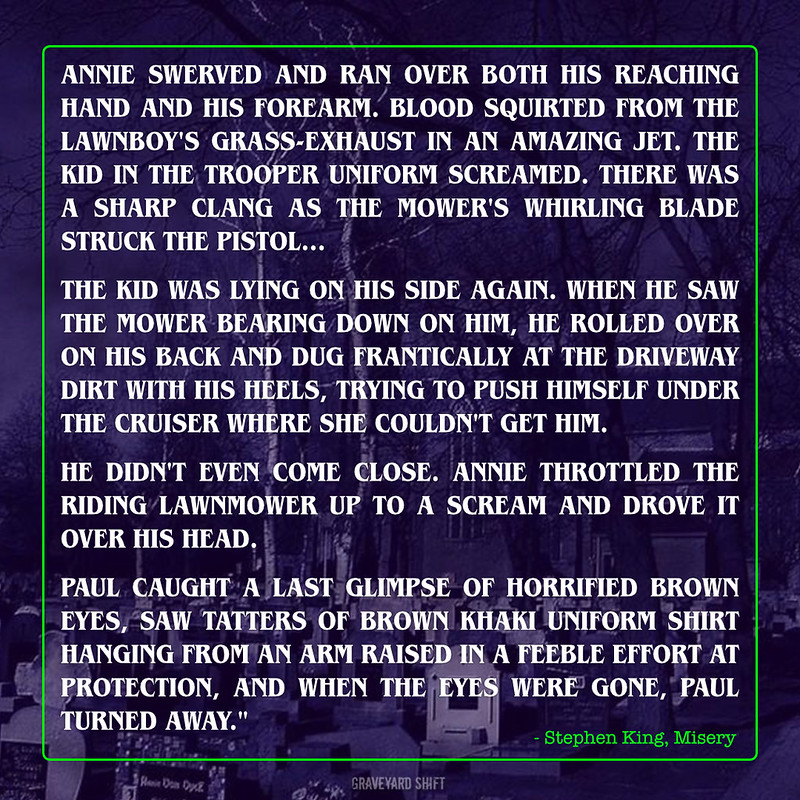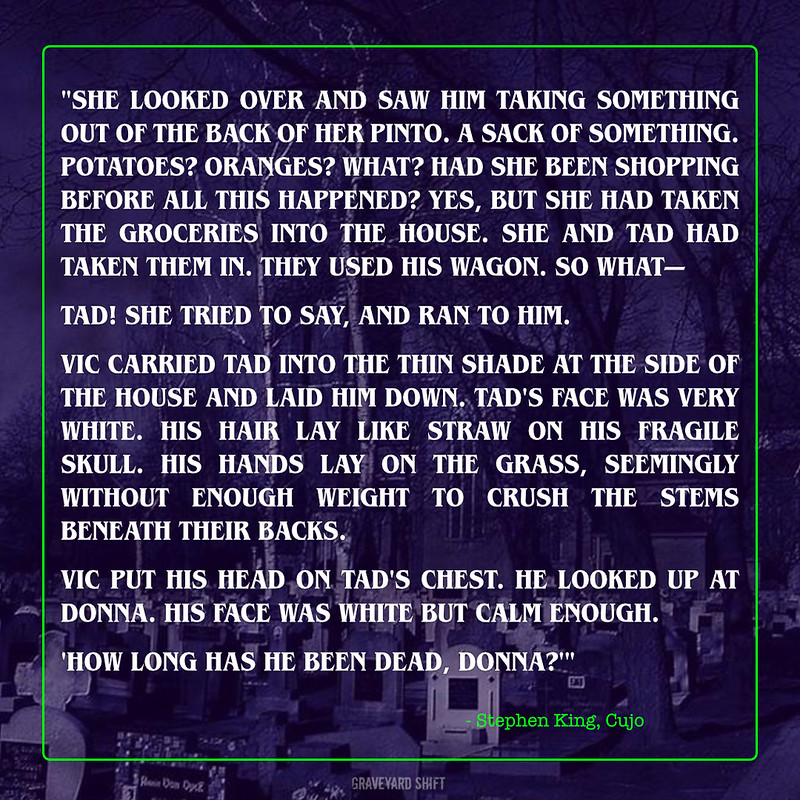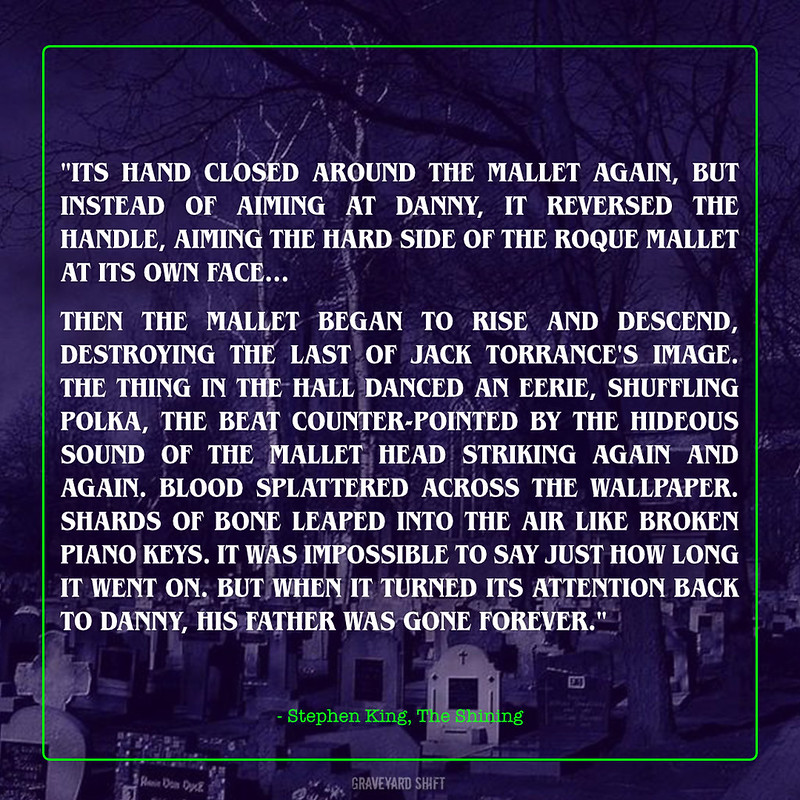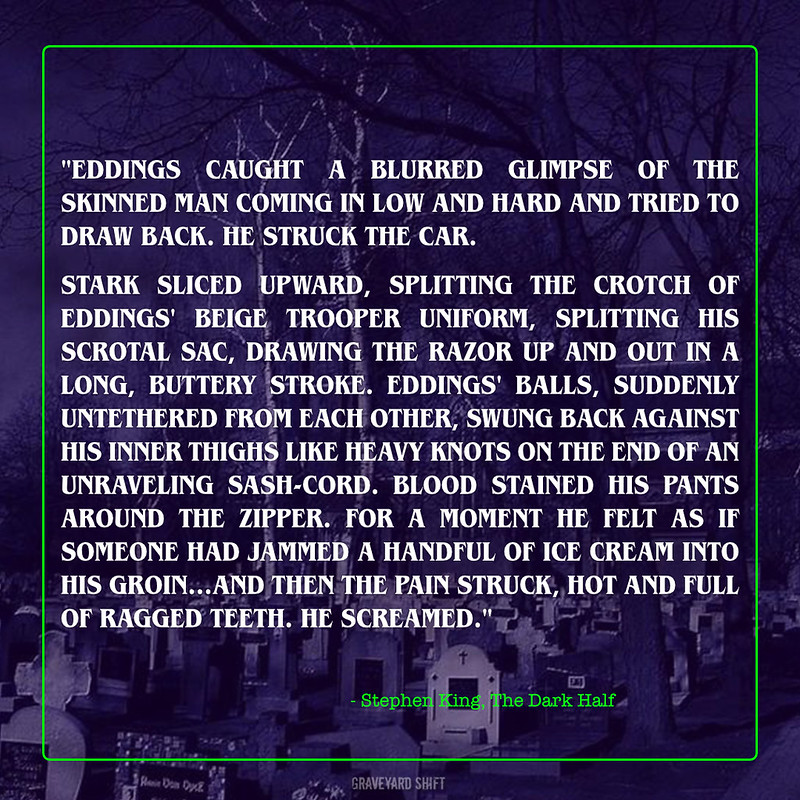In the conversation about horror novels and their film adaptations, it can be argued books are the more disturbing of the two, because no matter how realistic the special effects in said movies are, they can never replace the effectiveness of the imagination. This is certainly true of Stephen King movies. They often contain scenes faithfully adapted from their source books, but they lack the emotional heft of the written word. And yet, there are some scenes from King's novels that are simply better left on the page, either because Hollywood standards keep them on the cutting room floor or because they're so gruesome.
Here are several of just such scenes, but beware of SPOILERS.
Included only in the uncut edition of The Stand, published in 1990, the sexual assault King conjured is truly bleak. It involves Trashcan Man, who plays a pivotal role in the climax of the novel, and the Kid, a character originally only glimpsed in flashbacks. The scene begins with what seems like a moment of tenderness between the two men; they're in bed together after a night of drinking. But things turn horrific pretty quickly:

While Trash ultimately escapes the situation with his life, he is left enormously scarred emotionally by the experience.
- Category: Book
Buy at
- Category: Film
Buy at
You won't find this scene in the film adaptation of Misery, directed by Rob Reiner and starring James Caan and Kathy Bates in her Oscar-winning role as Annie Wilkes. There are some pretty horrible images featured in the movie - including the infamous "hobbling" about midway through the narrative - but nothing is as gut-churning as Annie's dispatching of a state trooper with her riding lawnmower:

- Category: Book
Buy at
If you've only ever seen Lewis Teague's film version of Cujo, you might think King wraps up his novel about a rabid Saint Bernard up with a nice, neat bow of a happy ending.
You'd be completely wrong for thinking that. The book features one of the bleakest endings in King's bibliography, perhaps even bleaker than Pet Sematary. While in the film four-year-old Tad only appears dead before his mother Donna successfully resuscitates him via CPR, in King's novel, the proceedings are much, much darker:

Donna repeatedly and fervently attempts to revive her son in vain. King prolongs this awful scene for what feels like several pages, though its really only paragraphs. Adding insult to injury, Donna also begins to succumb to a rabies infection from Cujo. Numerous paramedics and cops alike try to pull her off the body of her son, but she is too frantic and strong for them; she even bites a Rescue Unit worker, forcing him to later get treatment for rabies.
The scene finally ends with paramedics sedating Donna and loading Tad onto a stretcher, but the distraught mother breaks away once again to pummel the dead dog.
- Category: Book
Buy at
For his 1980 film The Shining, Stanley Kubrick changed quite a bit from the source King novel, including some key elements of the book's climax. While his Jack Torrance (played by Jack Nicholson) famously brandishes an ax to terrorize his family, King's protagonist lets loose with a roque mallet (no, not a croquet mallet, though they're similar).
Jack's most violent attack - and possibly the most violent moment in the whole novel - concerns the remodeling job the tormented ex-drunk does on his own face:

- Category: Film
Buy at
Included in neither Tobe Hooper's 1979 TV movie nor the 2004 miniseries adaptation starring Rob Lowe, this scene from Salem's Lot isn't at all bloody, but it's certainly upsetting. It involves one Sandy McDougal, a young mother who abuses her infant son Randy. She really doesn't seem to care about the baby at all - that is, until she finds Randy in his bedroom after a visit from young vampire Danny Glick. The child appears to be deceased, but he is, in fact, undead.
Sandy attempts to wake him in vain. As a last ditch effort, she carries him into the kitchen, sets him in his high chair, and grabs a jar of baby food from the cabinet:

- Category: Book
Buy at


